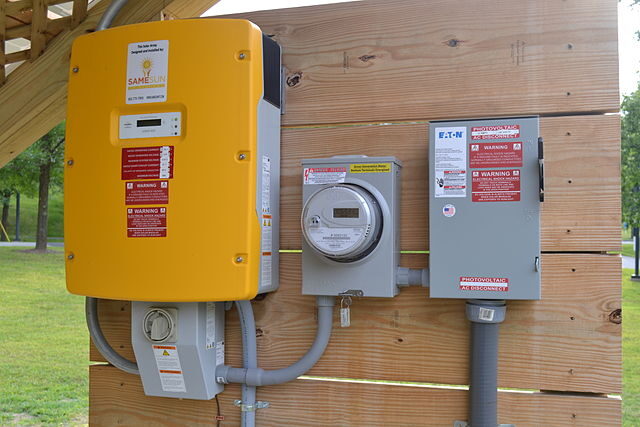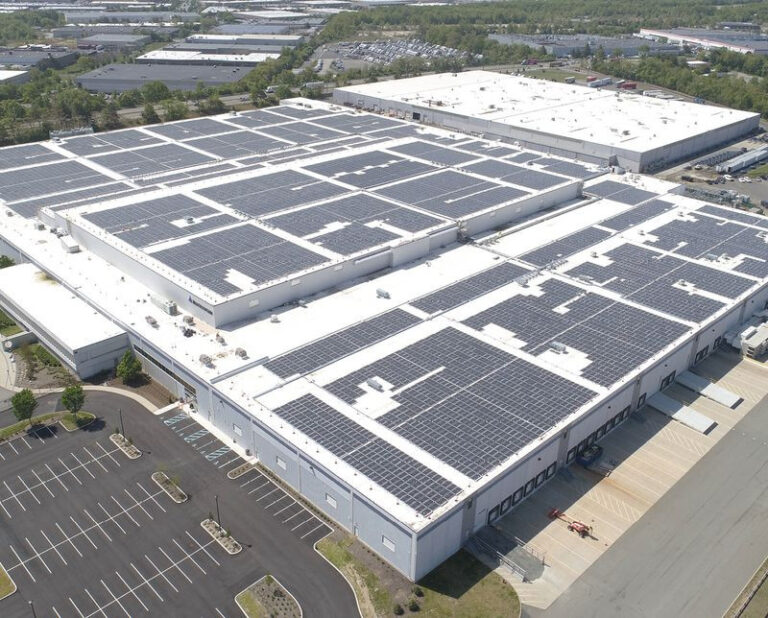Data centers come in many sizes. The largest, China Telecom’s Inner Mongolia Information Park, covers 100 hectares and consumes up to 150 MW per hour. Northern Virginia, in the United States, is home to about 300 facilities in a grouping known as Data Center Alley, each using about 10 to 50 times as much energy per square foot as a typical commercial office.
Utility Dominion Energy was forced to cut grid connections for new Data Center Alley members in 2022 and is now building new transmission lines to meet demand.
The United States has more than 5,000 data centers and consultant McKinsey & Company expects their energy consumption to rise from a peak of 17 GW/hour in 2022 to 35 GW/hour in 2030.
Scale up
Data centers are becoming increasingly intensive and energy-intensive, but also more efficient.
“The hyperscale cloud providers all seem to be in an arms race to build out as much infrastructure as possible as quickly as possible,” said Dan Thompson, principal research analyst at S&P Global Market Intelligence. “Some of these are high-density, high-performance computing type deployments, but a lot of them are also cloud providers building out at scale. The densities in watts per square meter are increasing, but I think what we are seeing now is just the tip of the iceberg.”
Data centers have a Power Usage Effectiveness (PUE) ratio, which determines how much energy is required for computing versus other activities, such as cooling, lighting and power losses. A PUE of 1.5 indicates that a data center requires an additional 500 kW of power for 1 MW required for computing purposes.
S&P’s Thompson said energy density has fallen from an average of 1.58 in 2020 as energy density and cooling efficiency have increased. However, the lowest values come with some tradeoffs.
What is in a data center?
Data centers contain dense server racks with processing, storage and networking equipment, plus supporting infrastructure and cabling for power supply and energy-intensive cooling, via air, water, coolants or non-conductive fluids. The rise of artificial intelligence is transforming data centers, which now feature more specialized hardware accelerators for intensive tasks, high-performance computing infrastructure, and higher energy consumption. Special AI buildouts can require up to five times the amount of fiber optic cabling.
“The data centers we’re seeing built now are designed for PUEs of 1.3 to 1.4, so you’re seeing some improvement there,” Thompson said. “That said, even though they are designed for those PUEs, many factors can prevent the building from ever actually achieving that PUE, depending on the climate and operations. We have seen some structures with a designed PUE of 1.15 to 1.2, but these facilities require the consumption of large amounts of clean water to reach those numbers. Given the issues surrounding access to clean water, hyperscalers and the companies that build data centers for them tend to build slightly less efficient data centers because they use very little or no water.”
Greener computing
The world’s tech giants are the biggest buyers of renewable energy through power purchase agreement (PPA) companies. On March 1, 2024, Microsoft and asset manager Brookfield signed a record 10.5 GW deal to supply solar, wind and “new or impactful carbon-free energy generation technologies” to Microsoft from 2026 to 2030.
Microsoft says its CO2 Emissions are now up 30% from when the country set its 2030 net zero target in 2020, and that’s mainly thanks to data centers.
“The increase in our scope 3 emissions [from third-party, supply chain companies] comes primarily from the construction of more data centers and the associated carbon in building materials and hardware components such as semiconductors, servers and racks,” Microsoft said, adding that the PPA of 10.5 GW of renewable energy is on top of a clean energy supply of 19.8 GW comes. power portfolio.
Simon Maine, director of communications, renewable energy and transition at Brookfield, explains pv magazine that the deal was eight times larger than any previous PPA.
“We have a very large renewable energy and transition business, with over $100 billion in assets in that division alone and more than 30 years of industry experience,” Maine said. “We either want to buy assets or, more recently and more likely, buy companies. The companies will have high-quality management teams with a full spectrum of capabilities. We have projections to install somewhere between 5 GW and 7 GW per year [to 2030]. The deal with Microsoft probably covers about 30% of that growth, and that’s without taking further acquisitions into account.”
Brookfield is said to have acquired a majority stake in India’s Leap Green Energy for $500 million, and is also said to be preparing to acquire Australian renewable energy developer WindLab, which has around 24 GW of projects in development or under construction.
Anas Papazachariou, senior PPA manager at renewable energy developer Cero Generation, explained how colocation can meet the energy demands of data centers.
“A single solution where solar can accommodate the entire increase in the growing number and size of data centers is probably not optimal and I have to be honest about that,” he said. “So many of the buyers want to create virtual portfolios, while wind and solar energy and combined batteries are part of their portfolio, because they actually optimize their profiles based on that.”
Solar plus storage means more expensive energy purchase agreements, but less risk, Papazachariou says.
Efficient clusters
“Hyperscale” data centers are clustered for efficiency. However, in terms of latency, many other data centers, especially those providing Internet and network services, are distributed closer to population centers. These are smaller and have more variation in demand.
Mike Bates, general manager of the Intel Energy Center of Excellence, said data centers use workload management software that can respond to real-time energy conditions. Intel deploys software in data centers to manage workflows and loads, while also tracking the carbon footprint of workloads for audits by companies claiming low-carbon or net-zero workflows.
“One of my customers is the [internal] Intel Data Center Group and we are working to implement the same solutions we bring outside the market, ensuring we have prepared data centers for climate impacts while creating new opportunities,” said Bates. “For example, our software is also able to adjust the workload to certain circumstances. If I can increase the workload within the data center to the moments where there is an energy surplus, I can actually get paid for using that energy.” He added that energy resilience also includes interruptions in energy supply, if we take into account climate impacts.
Ben Levitt – associate director for the North American energy and renewables research team at S&P Global Commodity Insights for gas, energy and climate solutions – highlighted the cost benefits of operating data centers flexibly.
“Data centers with flexible operations – that is, interruptible and price-sensitive – cost less to deliver than data centers that are less flexible,” Levitt said. “Data centers that are interruptible may even have a faster grid connection. Furthermore, separately, it is possible that big tech could drive investment in developing and scaling the new, ‘clean firm’ technologies needed to provide 24-hour clean energy for their data centers.”
Levitt said new loads will lead to new investments in renewable energy, but fossil fuel generation, and increasingly batteries, will also create additional demand. Ultimately, much will depend on local bureaucracy and permits.
Levitt added that it is possible that big tech companies will play a role in scaling up new clean technology. “These efforts could accelerate the development of newer technologies that could reshape the energy supply mix faster than previously thought,” he said.
This content is copyrighted and may not be reused. If you would like to collaborate with us and reuse some of our content, please contact: editors@pv-magazine.com.
Popular content



